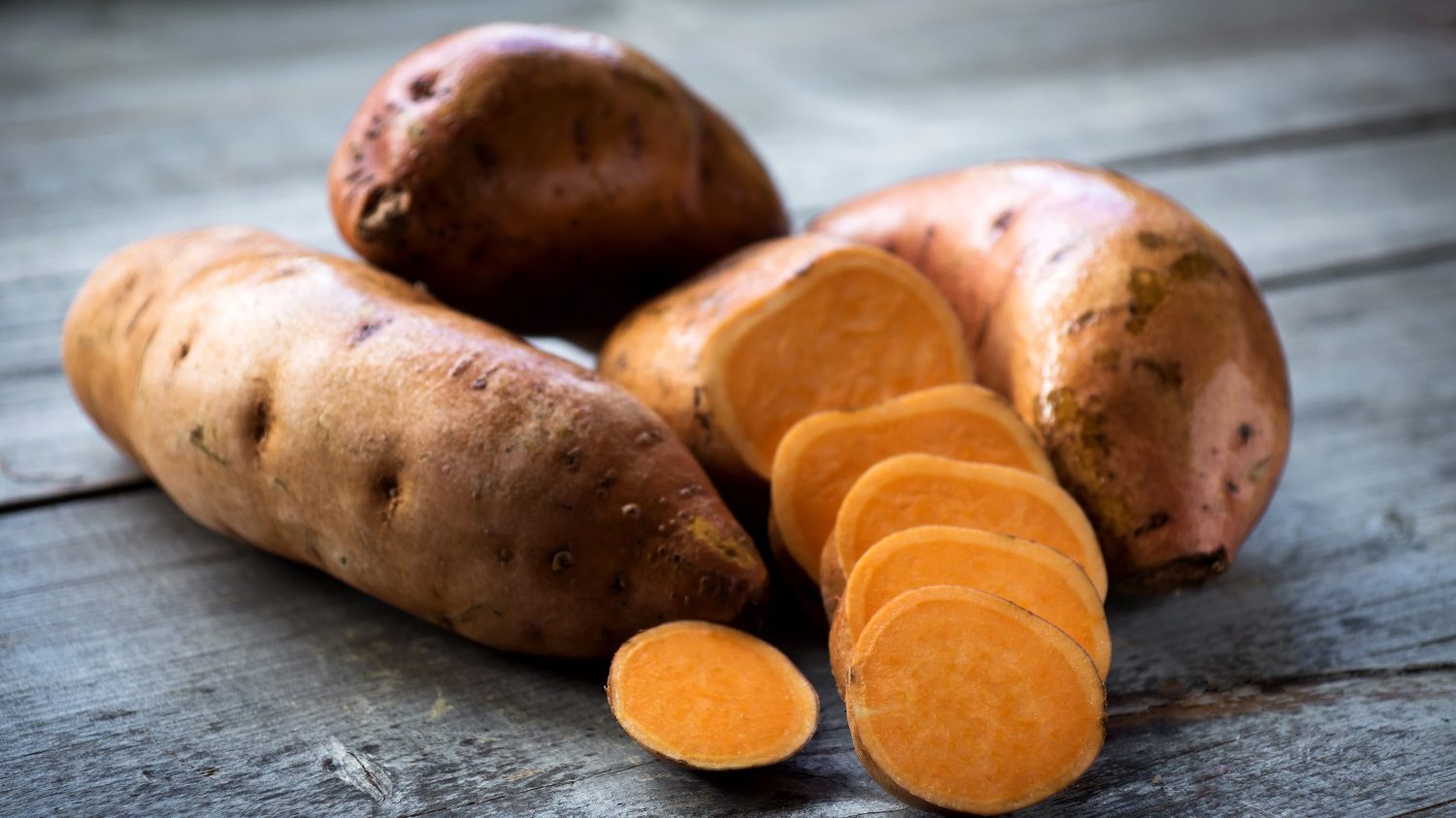
Sweet potatoes are grown from slips started indoors toward the end of winter. They are easy and fun to grow and a great project to do with kids!
Materials
1 local, organic sweet potato
5 sturdy toothpicks or bamboo skewers
1 wide-mouth canning jar
A sunny location
Starting the Sweet Potato Slips
1) Start with a local, organically grown sweet potato. Why? When you choose a local sweet potato, you are choosing one that has already proven to grow well in your area. Organic means it will not have been sprayed with any chemicals that may limit its growth. Look for one that is firm and healthy. Each sweet potato will produce anywhere between 15 and 30 slips, so one potato will give you plenty with some to share.
2) Look at the potato to determine which end is up. The pointy end is the bottom, or the root end. Push four or five sturdy toothpicks or bamboo skewers around the potato about one quarter of the way down from the top of the potato. These will help balance the potato at the mouth of the jar. Set the potato in the jar, pointy end down, and fill the jar with room-temperature water an inch below the rim. The potato should be at least half submerged in the water.
3) Find a sunny, warm location to set the jar and wait. Within about a week, the potato will start sending out roots. Keep the jar filled with water and change it occasionally to keep things fresh.
4) In a few weeks, the sweet potato will start to sprout. First you will see a little nodule on the surface. This will grow into a stem with leaves, called a slip. When the slip is 5-7” long, carefully break it off at its base and put it in a jar of room-temperature water and place in a sunny location. These slips will send out roots. Keep harvesting slips from the potato until you have as many as you need.
Planting and Caring for Your Sweet Potatoes
Depending on the variety, sweet potatoes take about 100 days from planting the slip to harvest. They do best with light soil and a warm, sunny location.
In late May or early June, dig the garden to loosen the soil. If your soil is heavy, you can grow the sweet potatoes in mounds. Plant the sweet potato slips about 16 inches apart, deep in the soil. They will send out roots along the stem. Mulch to help retain moisture and keep down weeds in the early weeks when the slips are getting started. Water them well at the start and evenly throughout the season.
Harvesting
Harvest the sweet potatoes when the leaves start to turn yellow. Cut the vine back so you can see where the base of the plant is. The biggest potatoes will be closer to the main root. Use a garden fork to loosen and lift the potatoes out of the ground. Be careful not to bruise them or pierce them with the fork. Rub the potatoes with your hands to remove the dirt or hose them down with water.
Curing and Storing
Properly curing the potatoes will help them develop a tougher skin and allow them to be stored longer. Lay them on a table or screen for seven to 10 days in your garage or other place out of direct sunlight that has good air flow and a steady temperature of around 80 degrees. When cured, store them in a location away from light in temperatures around 55 degrees. Paper bags make great storage containers, or you can use a box loosely covered with newspaper. Air flow is important.
Enjoy cooking with and eating your homegrown sweet potatoes!

